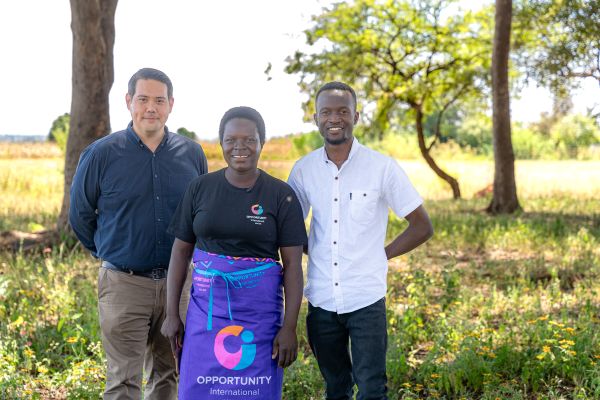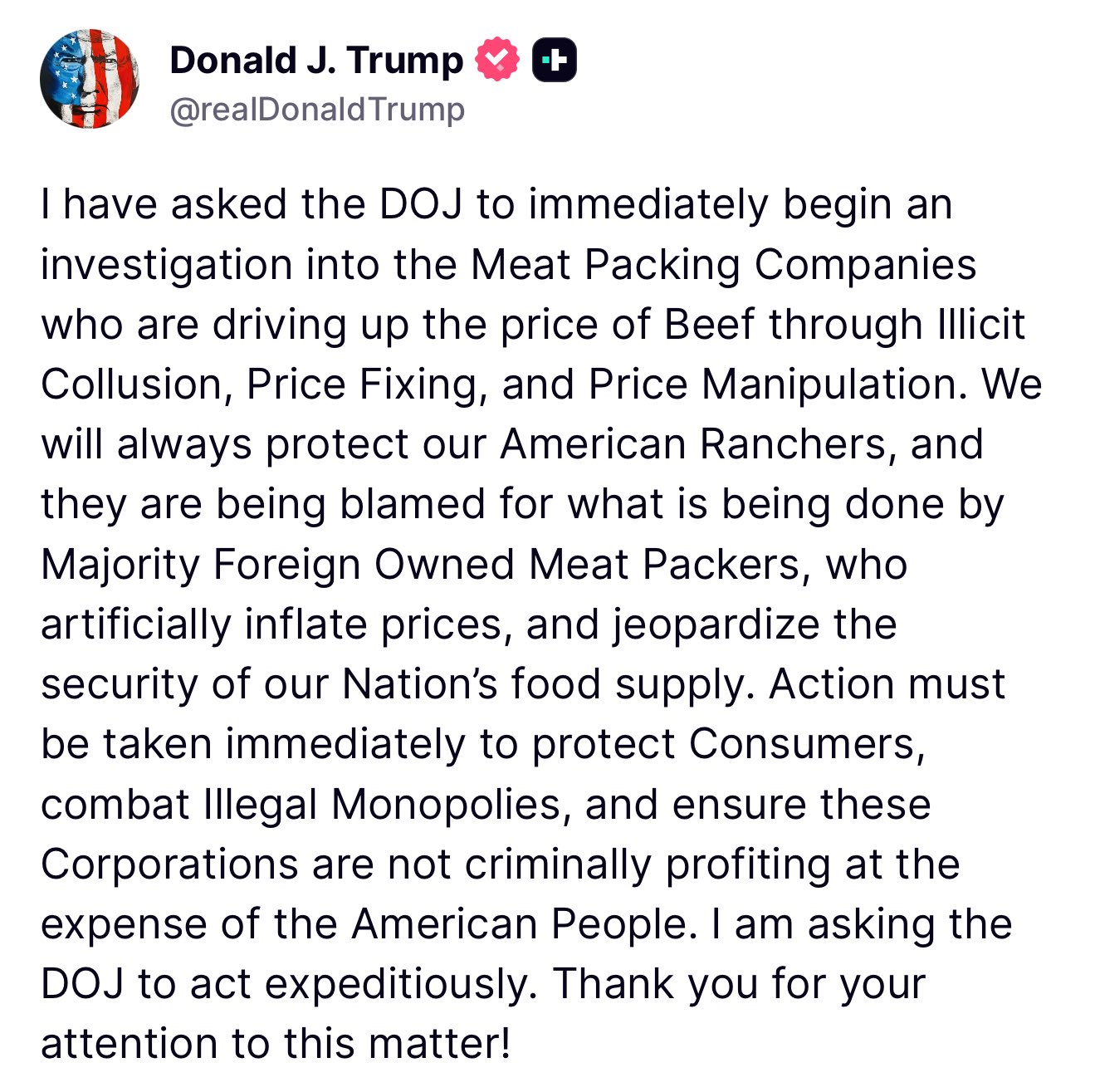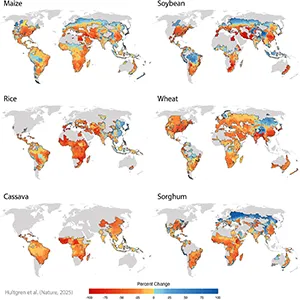$500 Million Invested in Smallholder Agriculture in Sub Saharan Africa – Farmers Review Africa

Report on Opportunity International’s Agriculture Finance Program and its Contribution to Sustainable Development Goals
Executive Summary
Opportunity International has achieved a significant milestone by investing $500 million in smallholder farming solutions through its Agriculture Finance program. This initiative directly supports the achievement of several United Nations Sustainable Development Goals (SDGs) by empowering over one million smallholder farming households in Sub-Saharan Africa. Through strategic partnerships and innovative solutions, the program addresses critical challenges related to poverty, hunger, economic growth, and sustainable agriculture.
Addressing Core Development Challenges: SDG 1 and SDG 2
The program’s core mission aligns directly with SDG 1 (No Poverty) and SDG 2 (Zero Hunger). Smallholder farmers, who produce up to 80% of the food in low- and middle-income nations, paradoxically represent the population most likely to experience extreme poverty and hunger. Opportunity International confronts this by tackling the estimated $170 billion annual funding gap for small-scale agriculture.
- SDG 1 (No Poverty): By providing access to capital and training, the program enables farmers to increase their income, build resilience, and break the cycle of poverty.
- SDG 2 (Zero Hunger): Investment in farmers enhances their productivity, which improves local and global food security. The program aims to increase farmer yields from their current 20-40% of potential, directly contributing to a world with zero hunger.
Strategic Framework for Sustainable Impact
The program’s success is built on a multi-faceted approach that leverages partnerships, innovative finance, and targeted support systems, reflecting a strong commitment to SDG 17 (Partnerships for the Goals) and SDG 9 (Industry, Innovation, and Infrastructure).
Partnerships and Financial Inclusion (SDG 17 & SDG 10)
In line with SDG 17, Opportunity International collaborates with 26 local Financial Service Providers (FSPs) across 12 countries. This partnership model is crucial for delivering tailored financial products to remote communities, thereby promoting SDG 10 (Reduced Inequalities).
- Blended capital solutions, including guarantees and low-cost debt, are used to reduce interest rates and make lending to smallholders more viable for local banks.
Key Program Initiatives and SDG Alignment
Several key initiatives have been launched to enhance productivity and financial inclusion, each contributing to specific SDGs.
- Farmer Support Network: This initiative trains and deploys over 1,700 local agricultural experts who provide peer support and resource connections to 510,195 farmers. This community-based model builds local capacity and trust, advancing SDG 8 (Decent Work and Economic Growth).
- Digital Solutions for Agriculture (SDG 9): Demonstrating a commitment to SDG 9 (Industry, Innovation, and Infrastructure), the program has developed a generative AI chatbot for smallholder farmers. Delivered via WhatsApp in local languages, it provides hyper-local agricultural guidance on adapting to climate change, pests, and market shifts. Initially launched in Malawi, it is expanding to Ghana and Kenya.
- Regenerative Agriculture Training (SDG 12 & SDG 13): To combat soil degradation, the program promotes regenerative farming practices. This directly supports SDG 12 (Responsible Consumption and Production) and SDG 13 (Climate Action) by fostering healthier soil and more resilient crops. Pilot plots have already demonstrated a 48% increase in maize yields compared to conventional methods.
Measurable Outcomes and Economic Impact (SDG 8)
The program’s strategies have yielded significant, measurable results that underscore its contribution to SDG 8 (Decent Work and Economic Growth). According to the 2024 Impact Report, the initiatives have led to the creation or sustenance of over 2.1 million jobs in 2024 alone, fostering robust economic growth within rural communities and advancing the global agenda for sustainable development.
Analysis of the Article in Relation to Sustainable Development Goals
1. Which SDGs are addressed or connected to the issues highlighted in the article?
-
SDG 1: No Poverty
The article directly addresses poverty by highlighting Opportunity International’s mission to mobilize capital for “those living in extreme poverty” and to “break the cycle of poverty.” The investment of $500 million is presented as a key strategy to achieve “a world without extreme poverty.”
-
SDG 2: Zero Hunger
The core focus of the article is on supporting smallholder farmers, who are described as “the backbone of our food supplies” and crucial to “global food security.” The program aims to improve food production by helping farmers “improve yields” and adopt “sustainable practices,” directly contributing to ending hunger.
-
SDG 8: Decent Work and Economic Growth
The initiative promotes economic growth by enabling “local economies [to] grow” and supporting small-scale entrepreneurs (the farmers). The article explicitly states that these strategies have led to the “creation or sustenance of over 2.1 million jobs in 2024 alone.”
-
SDG 17: Partnerships for the Goals
The entire model described in the article is built on collaboration. Opportunity International “collaborates with 26 financial service providers across multiple countries” and utilizes a “Farmer Support Network” to achieve its objectives, exemplifying a multi-stakeholder partnership for sustainable development.
2. What specific targets under those SDGs can be identified based on the article’s content?
-
Target 1.4: By 2030, ensure that all men and women, in particular the poor and the vulnerable, have equal rights to economic resources, as well as access to basic services, ownership and control over land and other forms of property, inheritance, natural resources, appropriate new technology and financial services, including microfinance.
The article details how the program provides financial inclusion to smallholder farmers through “$500 million invested in smallholder farming solutions,” “low cost loans,” and partnerships with “26 financial service providers.”
-
Target 2.3: By 2030, double the agricultural productivity and incomes of small-scale food producers, in particular women, indigenous peoples, family farmers, pastoralists and fishers, including through secure and equal access to land, other productive resources and inputs, knowledge, financial services, markets and opportunities for value addition and non-farm employment.
The program’s aim is to “ensure these farmers can maximize their potential yields and earnings.” The article provides evidence of progress with “average pilot plot maize yields growing 48% higher” in regenerative agriculture programs.
-
Target 2.4: By 2030, ensure sustainable food production systems and implement resilient agricultural practices that increase productivity and production, that help maintain ecosystems, that strengthen capacity for adaptation to climate change, extreme weather, drought, flooding and other disasters and that progressively improve land and soil quality.
The article describes the launch of “regenerative agriculture programs” that guide farmers toward “practices that promote healthier soil, stronger crops, and sustainable farming systems” to counter the effects of “chemical-intensive and overtillage farming practices.”
-
Target 8.10: Strengthen the capacity of domestic financial institutions to encourage and expand access to banking, insurance and financial services for all.
Opportunity International’s strategy involves partnering with “26 local banks in 12 countries” and using “blended capital solutions” to help these local financial service providers “in expanding affordable lending to smallholders.”
-
Target 17.3: Mobilize additional financial resources for developing countries from multiple sources.
The article highlights the mobilization of “$500 million” to address the “estimated funding gap for small-scale farming exceeding $170 billion annually,” demonstrating the mobilization of capital for developing nations.
3. Are there any indicators mentioned or implied in the article that can be used to measure progress towards the identified targets?
- Financial Investment and Reach: The article provides a clear metric of “$500 million invested in smallholder farming solutions” and states that this supports “over one million smallholder farming households.” This serves as an indicator for access to financial services (Target 1.4).
- Job Creation: The claim of “creation or sustenance of over 2.1 million jobs in 2024 alone” is a direct indicator for progress towards decent work and economic growth (SDG 8).
- Agricultural Productivity Increase: The specific data point that “average pilot plot maize yields growing 48% higher compared to conventional plots” is a direct indicator for measuring progress on increasing agricultural productivity (Target 2.3).
- Farmer Support and Training Outreach: The article mentions that the Farmer Support Network has reached “510,195 smallholder farmers to date” through “over 1,700 agricultural experts,” which can be used as an indicator for knowledge transfer and support systems (relevant to Target 2.3).
- Partnership Network: The numbers “26 financial service providers” and “12 countries” serve as indicators for the scale and scope of the partnerships being leveraged to achieve the goals (SDG 17).
- Technology Adoption: The mention of a “generative AI chatbot for smallholder farmers” that is “assisting thousands of farmers in Malawi” is an indicator of the adoption of new and appropriate technology to support resilient agriculture (relevant to Target 2.4).
4. Summary Table of SDGs, Targets, and Indicators
| SDGs | Targets | Indicators |
|---|---|---|
| SDG 1: No Poverty | 1.4: Ensure access to financial services and microfinance for the poor and vulnerable. |
|
| SDG 2: Zero Hunger | 2.3: Double the agricultural productivity and incomes of small-scale food producers. |
|
| SDG 2: Zero Hunger | 2.4: Ensure sustainable food production systems and implement resilient agricultural practices. |
|
| SDG 8: Decent Work and Economic Growth | 8.10: Strengthen the capacity of domestic financial institutions to expand access to financial services. |
|
| SDG 17: Partnerships for the Goals | 17.3: Mobilize additional financial resources for developing countries. |
|
Source: farmersreviewafrica.com

What is Your Reaction?
 Like
0
Like
0
 Dislike
0
Dislike
0
 Love
0
Love
0
 Funny
0
Funny
0
 Angry
0
Angry
0
 Sad
0
Sad
0
 Wow
0
Wow
0












































































